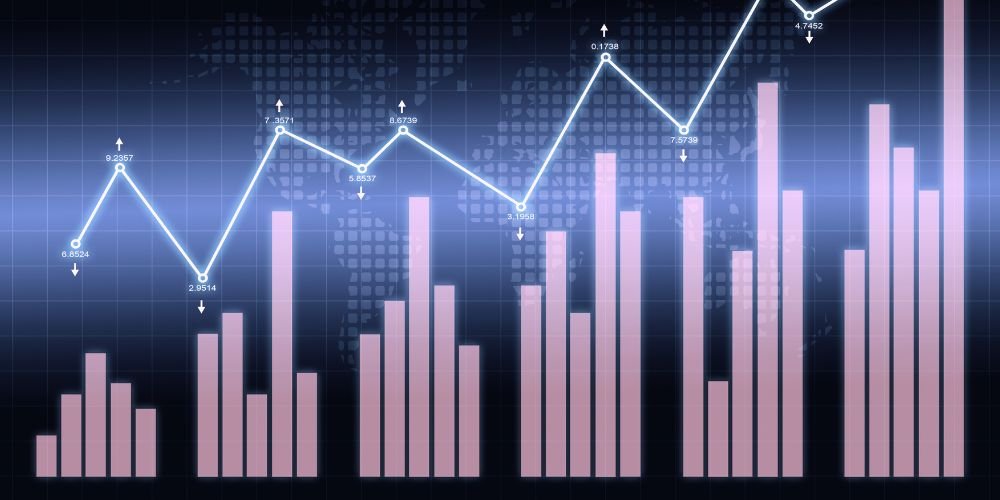In today’s data-driven world, data analytics has become a cornerstone of industry decision-making, transforming raw data into actionable insights that drive business strategies, innovation, and growth. The rise of big data, combined with advancements in computing power and analytical tools, has empowered organizations to harness the full potential of their data. This article delves into the evolution, methodologies, applications, and future directions of data analytics, highlighting its vital role in shaping the modern business landscape.
Understanding Data Analytics
Data analytics involves systematically analyzing data to uncover patterns, correlations, trends, and insights that inform decision-making. It encompasses various techniques, from descriptive and diagnostic analytics to predictive and prescriptive analytics, each offering a different level of insight and foresight.
Historical Evolution
The roots of data analytics can be traced back to the early days of statistical analysis in the 19th and 20th centuries. With the advent of computers in the mid-20th century, the ability to analyze larger datasets emerged, paving the way for the development of modern data analytics. The 21st century saw the exponential growth of data, known as big data, and the rise of advanced analytical techniques, including machine learning and artificial intelligence (AI), which have significantly expanded the scope and impact of data analytics.
Core Components
Data analytics is built on several key components:
- Data Collection: The process of gathering data from various sources, including databases, sensors, social media, and IoT devices. This data can be structured, semi-structured, or unstructured.
- Data Processing: Cleaning, transforming, and organizing data to ensure it is accurate, consistent, and ready for analysis.
- Analytical Tools and Techniques: Statistical methods, algorithms, and software are used to analyze data and extract meaningful insights.
- Data Visualization: Presenting data in graphical formats such as charts, graphs, and dashboards to make insights accessible and understandable to stakeholders.
Applications and Impact of Data Analytics
Data analytics has far-reaching applications across industries, enabling organizations to make informed decisions, optimize operations, and gain a competitive edge.
Business Intelligence and Strategy
In the business world, data analytics is essential for business intelligence (BI) and strategic planning. Companies can make data-driven decisions that enhance profitability, streamline operations, and improve customer satisfaction by analyzing sales data, customer behavior, and market trends. Predictive analytics helps businesses forecast demand, manage inventory, and identify emerging market opportunities.
Healthcare and Medicine
Data analytics revolutionizes patient care, research, and operational efficiency in healthcare. Predictive analytics can identify patients at risk of chronic conditions, enabling early intervention and personalized treatment plans. Data analytics also supports drug discovery, clinical trials, and population health management by analyzing vast medical data to uncover patterns and insights.
Finance and Risk Management
The finance industry relies heavily on data analytics for risk management, fraud detection, and investment strategies. Financial institutions use predictive models to assess credit risk, detect fraudulent transactions, and optimize investment portfolios. Data analytics also plays a crucial role in regulatory compliance and financial reporting.
Marketing and Customer Experience
Data analytics enables marketers to understand customer behavior, preferences, and sentiment, allowing for targeted marketing campaigns and personalized experiences. Companies can improve customer engagement, retention, and loyalty by analyzing data from social media, customer feedback, and transaction histories.
Manufacturing and Supply Chain Optimization
In manufacturing, data analytics optimizes production processes, reduces waste, and improves product quality. Predictive maintenance analytics helps companies anticipate equipment failures and minimize downtime. In supply chain management, data analytics enhances demand forecasting, inventory management, and logistics, leading to cost savings and increased efficiency.
Government and Public Policy
Government agencies use data analytics to inform policy decisions, improve public services, and enhance transparency. By analyzing data from various sources, governments can more effectively address public health, crime, and environmental sustainability.
Benefits of Data Analytics
Implementing data analytics offers numerous benefits for organizations, including:
Enhanced Decision-Making
Data analytics gives organizations the insights needed to make informed, data-driven decisions. It reduces reliance on intuition and guesswork, leading to more accurate and effective strategies.
Increased Efficiency and Productivity
Data analytics helps organizations achieve greater efficiency and productivity by optimizing processes and operations. It can result in cost savings, reduced waste, and faster time-to-market for products and services.
Competitive Advantage
Organizations that leverage data analytics can gain a competitive edge by identifying market trends, customer preferences, and emerging opportunities faster than their competitors.
Improved Customer Insights
Data analytics enables companies to understand their customers better, leading to more personalized products, services, and experiences that drive customer satisfaction and loyalty.
Risk Mitigation
Predictive analytics allows organizations to identify and mitigate risks before they materialize, whether in financial markets, supply chains, or cybersecurity.
Challenges and Future Directions
While data analytics holds immense potential, several challenges must be addressed to realize its benefits fully:
Data Quality and Integration
Ensuring data quality, accuracy, and consistency is a significant challenge. Data integration from disparate sources can be complex and time-consuming, especially in large organizations.
Privacy and Security
The collection and analysis of vast amounts of data raise concerns about privacy and security. Organizations must navigate regulatory requirements such as GDPR and implement robust data protection measures to safeguard sensitive information.
Skills Gap
There is a growing demand for skilled data analysts, data scientists, and data engineers. Addressing the skills gap through education, training, and upskilling is critical to meeting the needs of the data-driven economy.
Ethical Considerations
As data analytics becomes more pervasive, ethical considerations around data use, bias, and transparency must be addressed. Organizations must establish ethical guidelines and practices to ensure responsible use of data analytics.
Future Directions
Several emerging trends shape the future of data analytics:
Artificial Intelligence and Machine Learning
Integrating AI and machine learning with data analytics transforms how organizations analyze data. AI-powered analytics can identify patterns and insights in real time, enabling faster and more accurate decision-making.
Real-Time Analytics
As the volume and velocity of data increase, real-time analytics are becoming more important. Organizations are investing in technologies that allow them to analyze data as it is generated, enabling timely responses to changing conditions.
Data Democratization
The democratization of data analytics involves making analytical tools and insights accessible to a broader range of users within an organization. Self-service analytics platforms empower employees at all levels to explore data and make informed decisions.
Edge Analytics
With the rise of IoT and edge computing, data analytics is moving closer to the source of data generation. Edge analytics allows for the processing and analysis of data at the edge of the network, reducing latency and enabling real-time insights.
Data Analytics in the Cloud
Cloud-based analytics platforms offer scalability, flexibility, and cost-efficiency, making advanced analytics accessible to organizations of all sizes. The adoption of cloud analytics is expected to grow, driven by the need for real-time insights and collaboration.
Conclusion
Data analytics has become an indispensable tool for organizations across industries, enabling them to unlock the full potential of their data. Data analytics transforms how businesses operate and compete by providing actionable insights, improving decision-making, and driving innovation. As technology advances and the volume of data continues to grow, data analytics will only become more critical in shaping the future of business and society. By embracing data analytics and addressing the associated challenges, organizations can harness the power of data to achieve their goals and thrive in the digital age.










